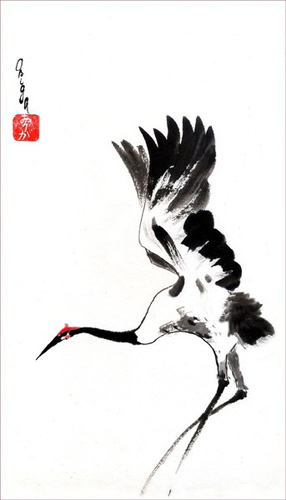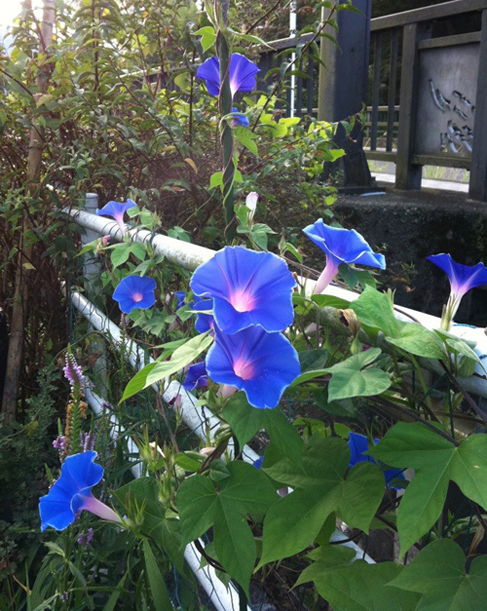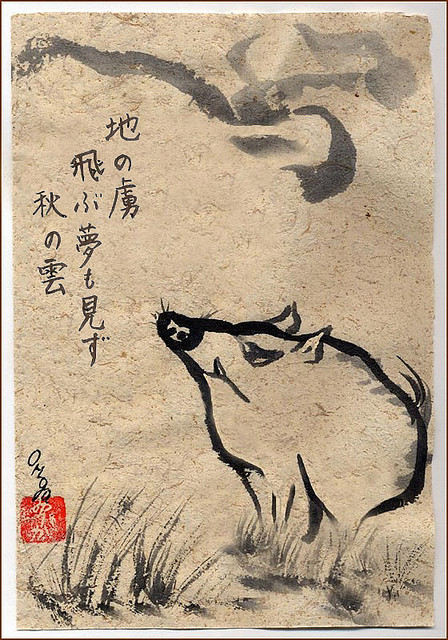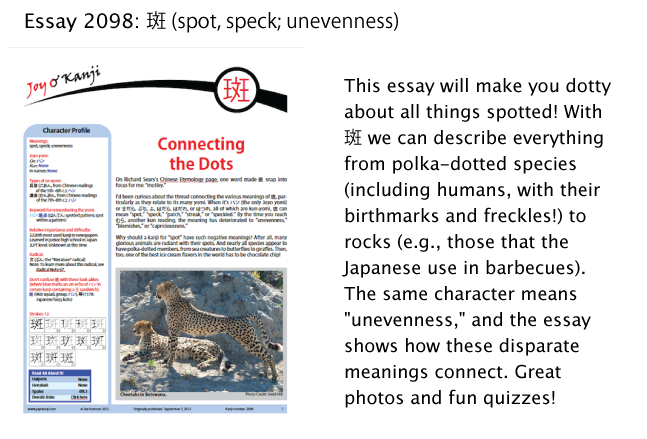Autumn Approaches
Let's start with a quiz. What do you think the following could mean?
朝顔 morning + face
If my pre-shower and pre-caffeine "morning face" is any indication, the object in question might not be too appealing!
I'll block the answer with artwork by a talented woman who calls herself Origa.

This piece is "Landing Crane." Now for the answer:
朝顔 (あさがお: morning + face) means "morning glory."
Oh, it is something appealing! This beautiful flower, one of my favorites, opens in the morning and shows its face to the world! It closes at night. As a friend of a friend said on Facebook, this flower is in sync with humans.
Asia has a special connection to morning glories. According to Wikipedia, the Chinese first grew this flower because its seeds have a laxative effect! Then, in the ninth century, the Japanese learned about morning glories and cultivated them as ornamental flowers. In that capacity, they became very popular during the Edo era.
Even today, morning glories remain important in Japan. One proofreader tells me that, as a homework assignment over the summer, kids often have to observe morning glories and write down what they see.
This is Origa's rendering of a morning glory:

And here's what the flower looks like in Japan right now:

Photo Credit: Kris Moon
At the moment, morning glories are (dare I say?!) glorious here in Berkeley, as well. In fact, the morning glory turns out to be one of two September birth flowers, the other being an aster. That makes me happy. I adore morning glories, September is my birth month, and the color in the photo above is my favorite color!
I suspected that 朝顔 might be an autumn kigo (季語, きご: word in a haiku that creates a specific image of a certain season), so I looked into the matter. I'm pleased that I was able to understand a Japanese Q&A site well enough to know that this is indeed the case! In fact, as I learned there, 朝顔 is the kigo for the time following the first day of autumn (which is my actual birthday!).
What I've just said applies solely to the word 朝顔. Certain spinoffs of this term serve as seasonal words for summer or late autumn, as you'll see at the World Kigo Database.
Now let's return to kanji and to Origa's art. Here's "Wild Boar":

This piece is the result of a tremendous global collaboration:
handmade paper by Sergey Alexeenko (1976–2009), Ukraine
sumi-e (墨絵, すみえ: ink painting) and haiga (俳画, はいが) by Origa, United States
haiku by Asakiyume (Francesca Forrest), United States
Japanese translation by Sakuo Nakamura, Japan
calligraphy by Fumiko Nakamura, Japan
You may remember Sakuo-san's charming haiga about Popeye, featured in an April JOK Notebook. At that time, I noted that 俳画 combines 俳句 (はいく: haiku) with 画 (ガ: picture), so it's a "haiku picture."
Here again is the haiku about the wild boar (猪, いのしし):
地の虜
飛ぶ夢も見ず
秋の雲
Another quiz! Which kanji do you know? Which don't you know? I had no idea about 虜 (1903: captive), but I recognized the "tiger" radical in it and was thrilled to locate it quickly in Radical Note 141. Oh, this work is paying off in such a delicious way!
Okay, let's crack this haiku open! Here it is again horizontally, now with more assistance provided:
地の虜飛ぶ夢も見ず秋の雲
though earthbound
may I too not dream of flight?
soft autumn clouds
地 (ち: earth); 虜 (とりこ: captive); 飛ぶ (とぶ: to fly);
夢を見る (ゆめをみる: to dream, shown here in the negative form of the verb); 秋 (あき: autumn); 雲 (くも: clouds)
Did you notice that there's not a single compound here? According to one of my proofreaders, who is a haiku aficionado, a typical haiku uses やまと言葉 (やまとことば: ancient or primordial Japanese language), so they mainly feature singletons and kun-yomi. "Having said this," he mused, "I have to add that the modern haiku uses katakana and compounds, as well."
I'm glad about that. I just realized that, in addition to loving the way kun-yomi sound (they're often so melodic!), I like how they lead to constructions such as 地の虜, 夢も見ず, and 秋の雲. With these phrases, we can truly see how two entities relate to each other. Compounds are wonderful for other reasons. But the particles here provide a bit of space. If the characters are the branches of a tree, then these hiragana are the sunbeams shining in between. Bathed in the light, the branches can take up all the room they deserve.
Here's a preview of essay 2098 on 斑 (spot, speck; unevenness), which just came out today:

Have a great weekend!

Comments